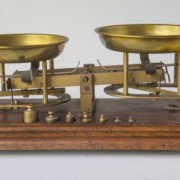You are looking at an archived version of our site. Please visit thepcc.org for a fresh, new experience!
State Payment Reform
As the healthcare system continues to change, many states have taken the lead in adjusting their policies to match with a quality, value based system. Greater investment in primary care is associated with lower costs, higher patient satisfaction, fewer hospitalizations, fewer ED visits and lower mortality. To date, nine states (RI, OR, ME, DE, WV, WA, VT, CO, CT) have either passed legislation or a budget proviso to allocate more healthcare expenditure towards primary care. In addition to these nine, several other states have either attempted, or are currently exploring options to do something similar. These states have recognized that a shift in healthcare expenditure, allowing more comprehensive and effective primary care, is necessary to achieve a higher performing overall healthcare system. The PCC is committed to connecting these state leaders with stakeholders providing other perspectives, to allow them to craft the most constructive legislation possible.
Resources

Publication | July 2017

Patient-Centered Primary Care Collaborative | July 2017
Health Care Payment Learning and Action Network | February 2017
Payment Methods and Benefit Designs: How They Work and How They Work Together to Improve Health Care
Urban Institute & Catalyst for Payment Reform | May 2016
This resource discusses a project conducted that looks at how payment methods and benefit designs can work together to improve quality and increase value of care. This intersection should be considered when moving forward with reforms that aim to create more high-value care.

The Patient-Centered Medical Home's Impact on Cost and Quality: Annual Review of Evidence, 2014-2015
Patient-Centered Primary Care Collaborative | February 2016
New England Journal of Medicine | November 2015
- ‹ précédent
- 2 of 6
- suivant ›
News
February 6, 2020 | The Milbank Memorial Fund
February 6, 2020 | The Milbank Memorial Fund
December 16, 2019 | Colorado Department of Regulatory Agencies
August 22, 2019 | Health Affairs Blog
- ‹ précédent
- 2 of 13
- suivant ›
Events & Media
February 27, 2015 | National Academy for State Health Policy
February 2, 2015
- ‹ précédent
- 2 of 7
- suivant ›
Related Content
Pagine
| Titolo | Source | Date |
|---|---|---|
| Analysis: Can States Fix The Disaster Of American Health Care? | Kaiser Health News | January 22, 2019 |
| Paying Hospitals To Keep People Out Of Hospitals? It Works In Maryland | April 5, 2018 | |
| HHS Secretary Alex Azar outlines 4-point plan to accelerate shift toward a value-based system | Fierce Healthcare | March 6, 2018 |
| How one US state saved $240 million in health care spending | Quartz | March 1, 2018 |
| PCDC Advocates for Primary Care Before New York State Legislature | PCDC | February 12, 2018 |
| An Early Look at 2018 Premium Changes and Insurer Participation on ACA Exchanges | Kaiser Family Foundation | August 10, 2017 |
| Investment In Primary Care Is Needed To Achieve The Triple Aim | Health Affairs Blog | May 10, 2017 |
| 13 less-noticed CBO findings on the ACA repeal bill | Modern Healthcare | March 14, 2017 |
| Deciphering CBO’s Estimates On The GOP Health Bill | Kaiser Health News | March 13, 2017 |
| Changing how doctors get paid | Modern Healthcare | March 11, 2017 |
Pagine
Associated Stakeholders:
Secondary menu
Copyright © 2024 Primary Care Collaborative















